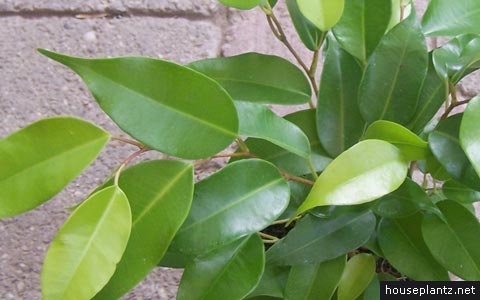the fiddle leaf fig (ficus lyrata) is native to africa. its dark green and glossy leaves can get more than 40 cm/16 inches long. but there are smaller cultivars available.
care
ficus lyrata likes a bright location with partial sun (morning and/or evening), light shade will be tolerated. it needs room temperature throughout the year with a winter minimum of 15 °c/59 °f.
a regular potting mix can be used. keep it moist but not wet and avoid overwatering such as drying out completely. drying at the soils surface is ok.
a half strength water soluble fertilizer can be given monthly in spring/summer and every six to eight weeks in winter (if placed at room temperature). if placed at 15 °c/59 °f it must not be fed. a re-potted plant don’t needs to be fertilized for the first eight weeks.
the fiddle leaf fig loves to be sprayed over with water regularly. this also keeps its leaves dust free.

ficus lyrata “bambino”
propagation
the fiddle leaf fig can be propagated by seeds or cuttings.













